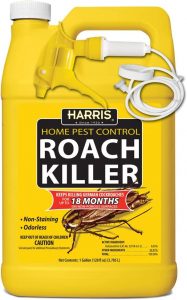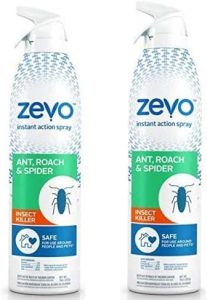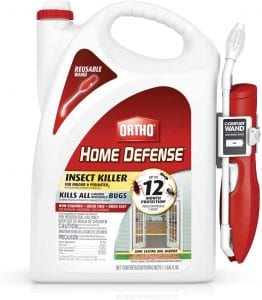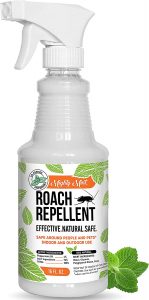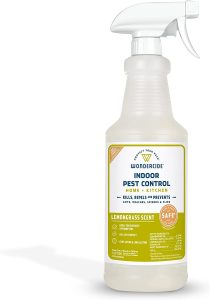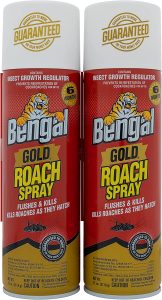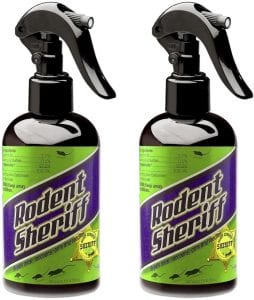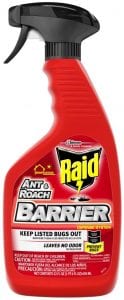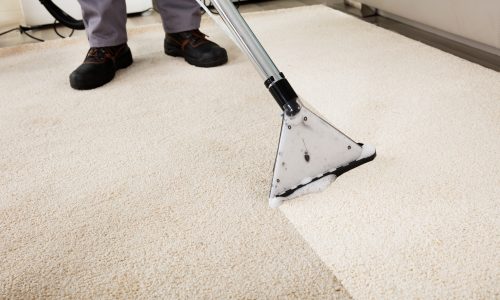The Best Roach Spray
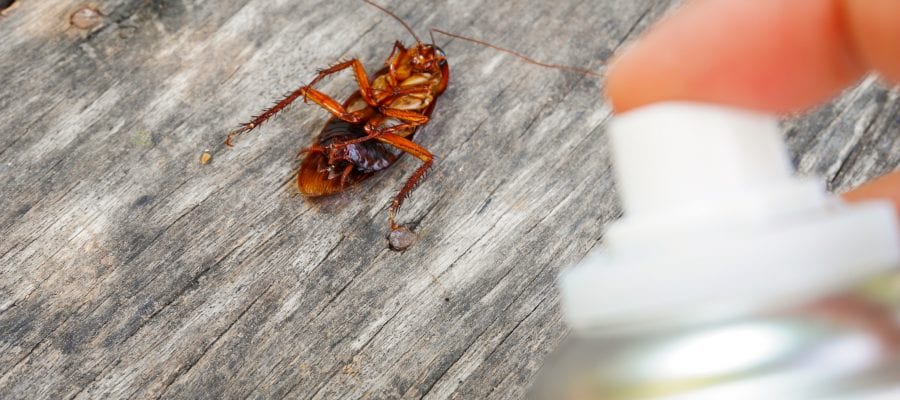
Our Review Process
Don't Waste Your Money is focused on helping you make the best purchasing decision. Our team of experts spends hundreds of hours analyzing, testing, and researching products so you don't have to. Learn more.
Our Picks For The Top Roach Sprays
- 1. HARRIS Unscented EPA-Registered Roach Spray
- 2. Zevo Animal-Safe Quick Roach Spray, 2-Pack
- 3. Ortho Home Defense Common Household Roach Spray
- 4. Raid Lemongrass Quick Ant & Roach Killer Spray
- 5. Black Flag Dry Formula Roach Aerosol Spray
- 6. Hot Shot HG-96781 Quick Dry Roach Insecticide Spray
- 7. Mighty Mint Concentrated Safe Roach Spray
- 8. Wondercide Kid Safe Natural Indoor Roach Spray
- 9. Bengal Mess-Free Roach Killer Spray, 2-Pack
- 10. Rodent Sheriff Non-Toxic Roach Pest Control Spray
- 11. S C Johnson Wax Raid Ant & Roach Barrier Spray
This roach spray works well in both residential and commercial spaces. It comes ready to use with a built-in spray trigger, so you won't have to worry about mixing the chemicals with water before applying. The formula is also free of offensive odors and won't stain your flooring or baseboards.
Long-Lasting FormulaOnce applied, this roach spray continues to work for a full 18 months!
You can use this effective roach spray both indoors and outdoors. It has a pleasant rose scent and is safe to use around humans and animals. In addition to roaches, the spray works to eliminate a variety of insects, such as earwigs and spiders.
Most VersatileYou'll get two ready-to-use roach spray bottles when you opt for this set.
This sprayer is a great long term solution for defense against not just roaches but several types of insects. It is suitable for indoor or outdoor use and goes on without leaving behind a residue. It kills on contact but can also serve as a barrier around the home for up to a year.
Long-Lasting RepellentThis home defense roach spray kit will eliminate pests on contact and serve as a long-lasting barrier.
If you have pets or are worried about small children, this roach spray can was formulated with the household health in mind. Its materials are meant to be non-toxic for everyone but the bugs. A spray in the right place will kill on contact or provide a lasting invisible fence against later insect incursions.
Pet-Safe MaterialsKill bugs with less toxicity by using this natural roach spray.
Buying Guide
Do you feel like your home is your castle? If so, nothing can send you rushing to the battlements like the sight of a roach.
Even the most staunch animal lovers draw the line at cockroaches, for good reason. Aside from mosquitoes, they’re one of the hardest insects to love — and the hardest to kill. They tend to come out only at night. They’re great at hiding in even the smallest crevices. They multiply quickly, in rates that put rabbits to shame. Worst of all, they need the same food, shelter and water that our homes provide, and once they find it you can bet they’re setting up camp.
Roach sprays are one of the most popular ways to deal with these persistent pests. They’re hardly the only method, and they do work best when combined with other, more long-term solutions. But when roaches make an appearance, they’re one of the fastest ways to make them disappear.
Sprays can be formulated from a variety of different ingredients, some of which can carry health risks for more than their intended target. But the two main types of aerosol roach killers are intended for residual and non-residual use.
Of the two, residual sprays are a more strategic form of pest control. They lay down a deposit on surfaces commonly visited by roaches. Some residual sprays are meant to be a repellent to these bugs and serve as a barrier to their entry. Such sprays might include relatively benign ingredients such as peppermint oil or chrysanthemum extract.
Other residual sprays offer a more aggressive solution, using toxic substances that will stick to the roaches’ bodies as they walk through. These substances will either kill the roaches by poisoning them (and any roaches they come in contact with at the hive) or act as an IGR (insect growth regulator) by sterilizing them. Some sprays can even do a little of both. Lethal residuals commonly use cypermethrin or some other member of a synthetic class of chemicals called pyrethroids. Some common IGRs include hydroprene or methoprene. Either way, you’ll want to avoid using these residuals on surfaces where you eat or where children might play. Doorways or baseboards are usually a good bet.
Some of the best residual roach killers can only be used in certain areas, so pay attention to the ingredients and user guides. Products containing diatomaceous earth are especially popular and effective at sticking to roach legs, but the substance has to stay dry to work. Needless to say, that limits its use outdoors.
Non-residual sprays are a more immediate solution. Pyrethroids are another go-to ingredient in these sprays, but they are formulated more differently and are meant to kill on contact. Again, try to avoid using these on kitchen countertops or near pets or small children.
Knocking out a single roach or two with these products might be satisfying, but once again: It’s hardly a permanent solution. Once you see one roach, you can be sure there are more. A better strategy might be a multi-pronged approach. Non-residual sprays with a thin nozzle attachment are great for flushing cockroaches out of corners or cracks, right onto areas where you may have laid down a residual layer of insecticide. You can use this same process with bait traps or other non-spray forms of pest control.
What to Look For
The more weapons you have against roaches, the better. Just make sure to use them wisely. If you’re using bait traps, IGRs or some residual spray with a delayed effect, make sure you don’t use a contact killing spray anywhere too near that area. Roaches will avoid the traps you’ve set, rendering them ineffective.
More to Explore
Contrary to that old saw, there’s no sane evidence that confirms cockroaches could actually survive a nuclear explosion. They could certainly handle the radiation afterward for much longer than humans, however, not to mention a host of other traumas. Most roaches can survive with no food for up to a month, and can even make do for about a week without their head. (While they do need their mouth to eat, a roach’s open circulatory system allows it to breathe without one.)

